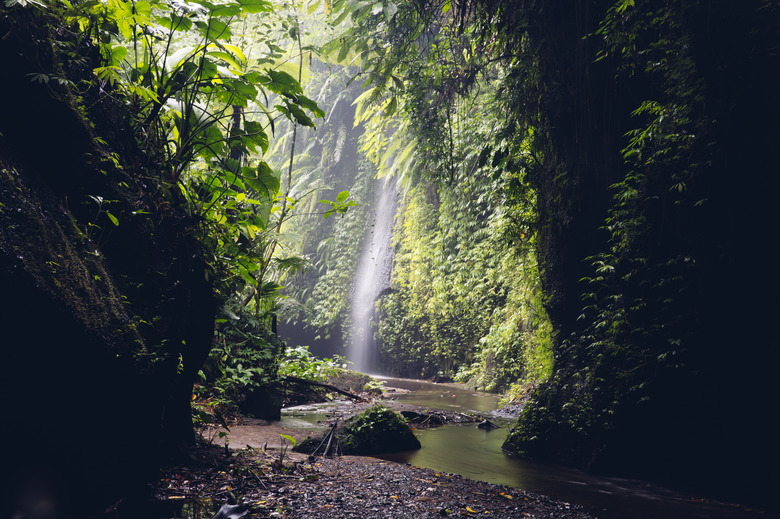Animals That Are Carnivores In The Tropical Rainforest
Large predators are uncommon in tropical rainforests because large prey species are also rare. The carnivores that do exist have adapted to be able to hunt above ground in the forest canopy as well as on the ground; they have also adapted to eat smaller prey. Many omnivorous animals–animals that eat other animals but also supplement their diets with plants–live in the rainforest as well.
Big Cats
Big Cats
Tigers are the largest species of rainforest cat; however, they face extinction due to habitat loss and hunting. The jaguar–the second largest rainforest cat–faces similar problems and are also endangered but can still be found in the Orinoco and Amazon river basins. Jaguars are good at both swimming and fishing and tend to hunt at night; they prey on frogs, fish, turtles, rodents, deer and caiman. Leopards are also rainforest cats, ranging from Asia to Africa, though many forms are either extinct or extremely rare now. Pumas, also called mountain lions, are New World rainforest cats.
Small Cats
Small Cats
In addition to the big rainforest cats, there are numerous small rainforest cat species. These include the leopard cat in Asia and the margay and the ocelot in the New World. The small cats can be the size of a house cat or the size of a dog. Most species hunt at night in both the forest floor and the rainforest canopy.
Small Mammals
Small Mammals
The fishing genet is a small mammal that eats fish but hates to swim; instead of hunting prey in the water, it attracts fish from the river bank, then dives in to catch them. Mongooses are another small mammal that hunts snakes, insects, eggs and small mammals and birds. Giant anteaters and armadillos are New World rainforest carnivores; the giant anteater eats ants and termites whereas armadillos feed on snakes, mice, lizards and insects that they dig out of the ground. Sloth bears live in Sri Lanka and Southern India, where they feed on termites; the sun bear is a related species that lives in Southeast Asia. Some rainforest omnivores include:
- wild pigs
- bats
- squirrels
- opossums
- raccoons
- coatimundis
Non-Mammals
Non-Mammals
Insectivorous birds are common in tropical rainforests since rainforests are full of large insects. A family of birds called flycatchers wait for insects to fly past, then swoop out to catch them; other birds spend their whole lives following swarms of army ants (which themselves eat mostly insects). Raptors such as hawks and owls also hunt small mammals in rainforests, and the giant harpy eagle hunts monkeys. Frogs and toads also feed off the insects in the rainforest. Pythons and boas are large snakes that kill prey by suffocation. Crocodiles such as the caiman prey on whatever animals happen to come along, including small mammals and birds.
Cite This Article
MLA
Gambrel, Ellie. "Animals That Are Carnivores In The Tropical Rainforest" sciencing.com, https://www.sciencing.com/animals-carnivores-tropical-rainforest-8167770/. 22 November 2019.
APA
Gambrel, Ellie. (2019, November 22). Animals That Are Carnivores In The Tropical Rainforest. sciencing.com. Retrieved from https://www.sciencing.com/animals-carnivores-tropical-rainforest-8167770/
Chicago
Gambrel, Ellie. Animals That Are Carnivores In The Tropical Rainforest last modified March 24, 2022. https://www.sciencing.com/animals-carnivores-tropical-rainforest-8167770/
